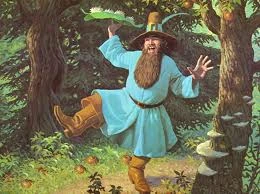This
post marks the beginning of an ongoing series about speculative literature and
issues of the environment. While I regularly review YA speculative fiction, I’m
starting a PhD in English Literature with the hope of writing my dissertation
about environmental speculative fiction. As you can imagine, my reading time is
going to be drastically cut, but this column will give me a chance to spin out
some of my ideas about environmental SFF.
I
promise, I won’t get all academic. Some of the greatest speculative writing happening today has
environmental themes, whether it’s Trail
of Lightning by Rebecca Roanhorse or Jeff Vandermeer’s extensive work. Speculative
writing almost always is concerned on some level with place—whether that’s a
spaceship or Hobbiton. Environmental issues have only grown in the popular
imagination since Thoreau, Rachel Carson, the 1979 World Climate Conference,
and plenty of smaller, community focused issues in between. Similarly,
environmentally-focused stories didn’t just start in recent days.
In
fact, I blame Tolkien for laying the foundation of what has now become the
focus of my career as an academic, writer, and activist. My dad tried to read
aloud The Lord of the Rings to me
when I was six. As one might imagine, it was a little scary for a six-year-old
(though my younger brother was just fine). My dad successfully read aloud the
trilogy the next year (because there was no way in heck he was going to let us
see the movies without having read the books).
Tolkien’s
work became a staple in my yearly reading, and each time, I find something new
to love. The first time through The Lord
of the Rings, my favorite character was Tom Bombadil (yes, I was
heartbroken when he wasn’t in the movies). I also loved Treebeard. The only
line I have underlined in my beat-up copies is a description of how Treebeard
walks. Don’t even get my started on the wonderfulness of Quickbeam.
Probably
the most “radicalizing” moment was the end of The Return of the King (if you haven’t read the books and you don’t
want spoilers, stop here). While plenty of folks comment on how the first
hundred or so pages of Fellowship
is boring, that was one of my favorite parts as a kid and remains a beautiful,
endearing section to me as an adult. To see Tolkien bring the story full circle
by having Saruman as Sharkey industrialize the Shire only to have the Hobbits
rise up and take back their home stuck in my mind. A decade later after my
first reading, the major fracking company Haliburton came to my sleepy rural
town and destroyed farmland, cut down forests, poisoned the waters, and changed
the landscapes of my childhood. Looking back on Tolkien, it all starts to add
up how his writing prepped me to focus on the environment.
So
that’s a bit of my personal story of how a time-honored piece of fantasy nudged
a climate-change denier toward environmentalism. I promise, most of these posts
won’t be as personal and will be more precise in their topics. Up next, I’m
going to spend a few posts looking at animals in fantasy, ranging from Redwall to Mort(e) and all the beloved creatures in between.
Posted by Phoebe Wagner. A writer living in the high desert, she can be found on Twitter @pheebs_w or at https://phoebe-wagner.com/

